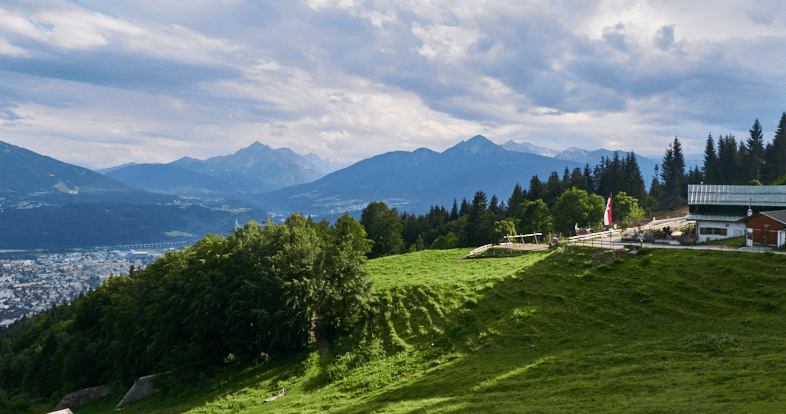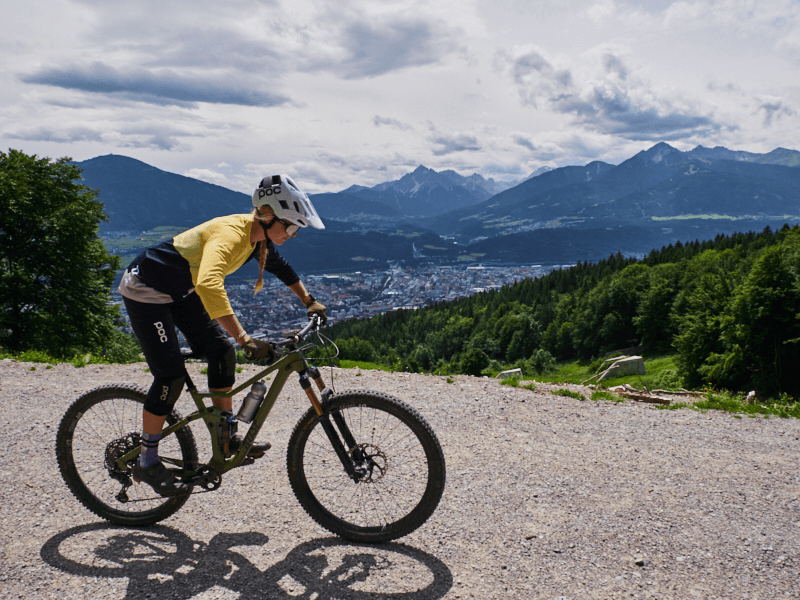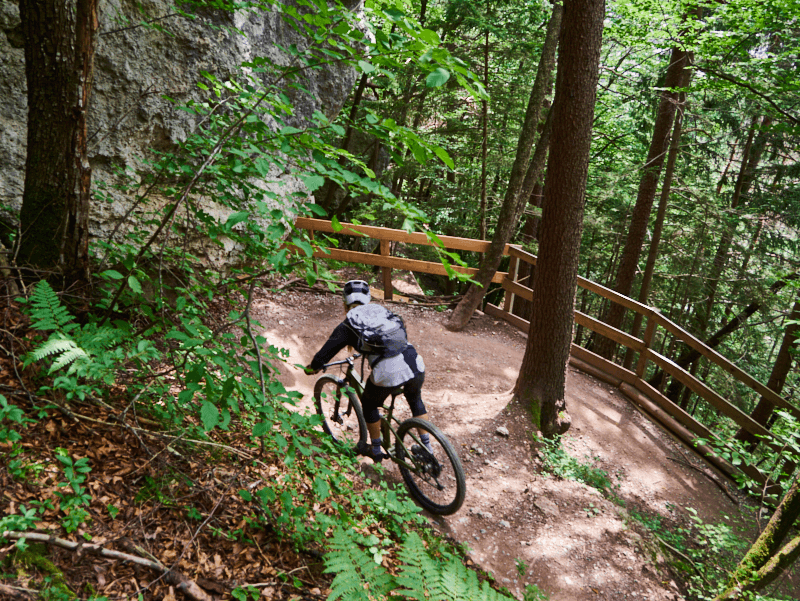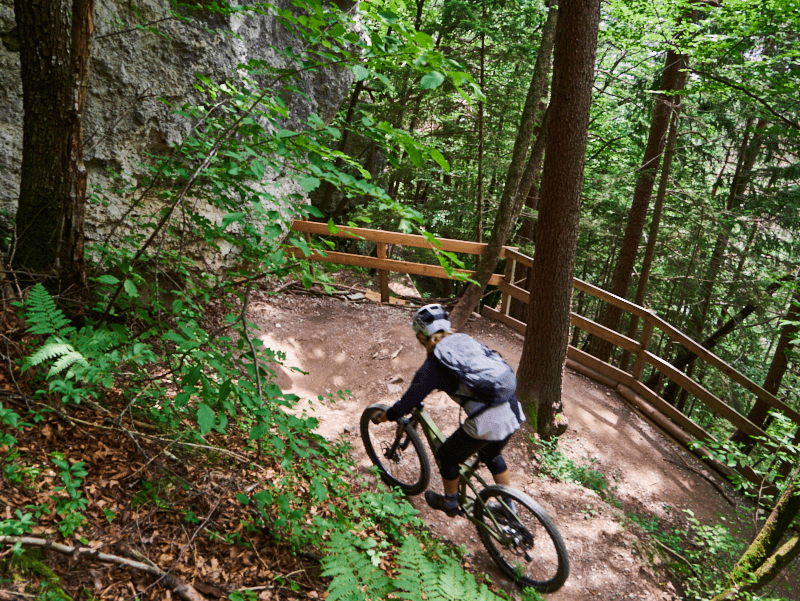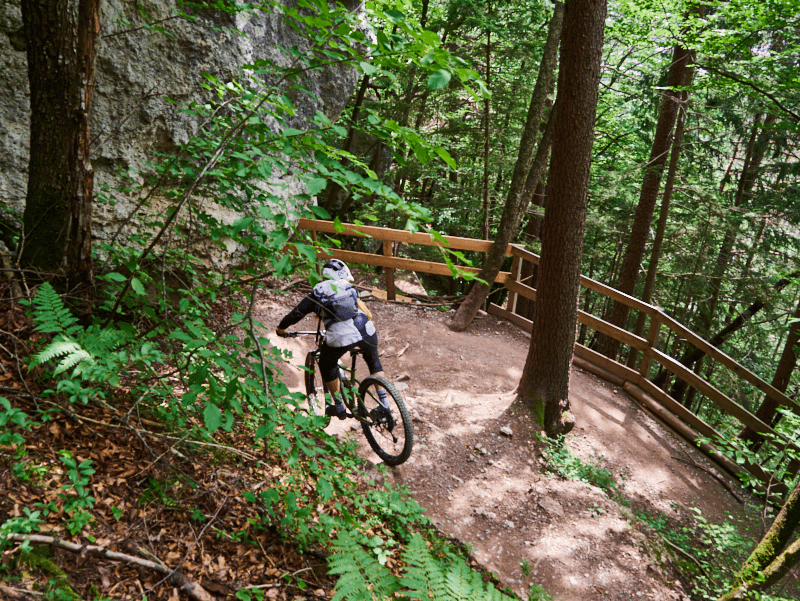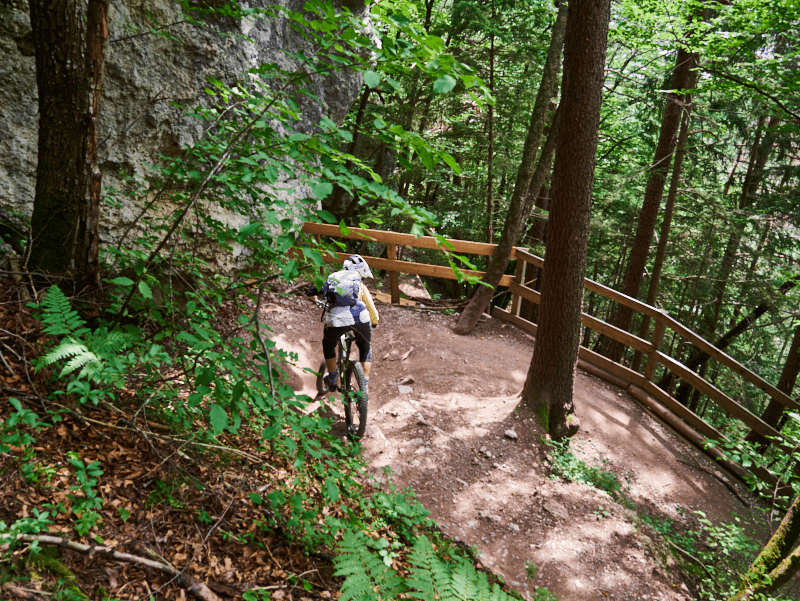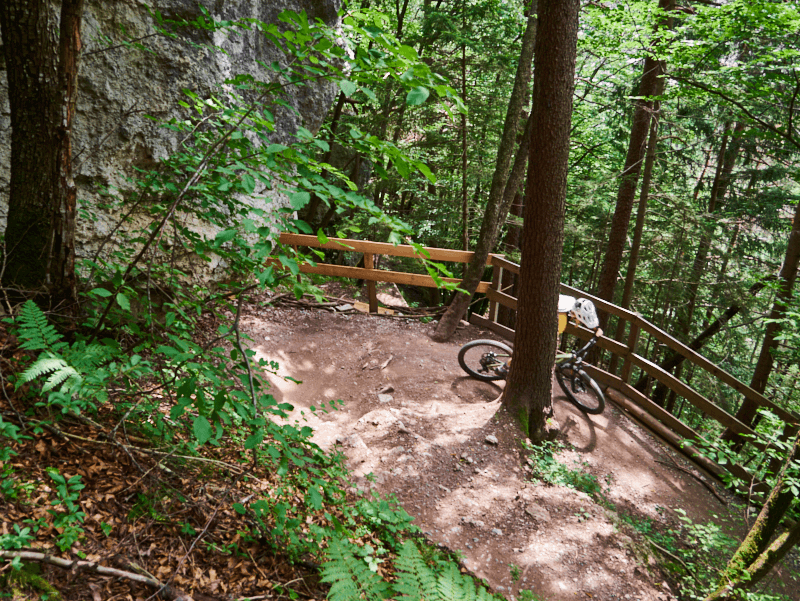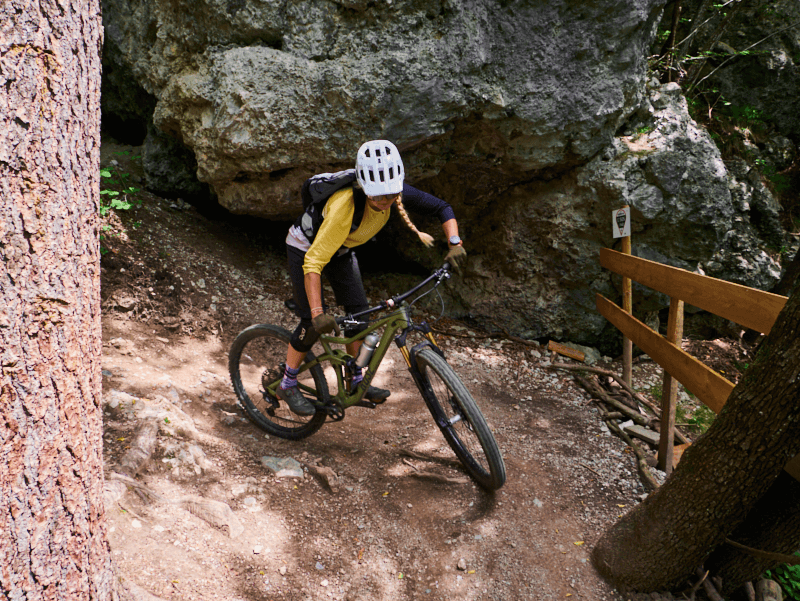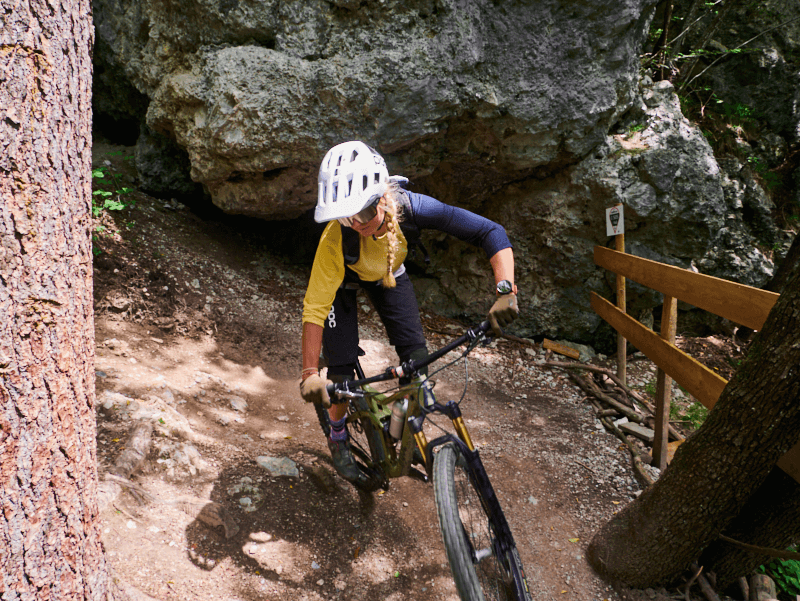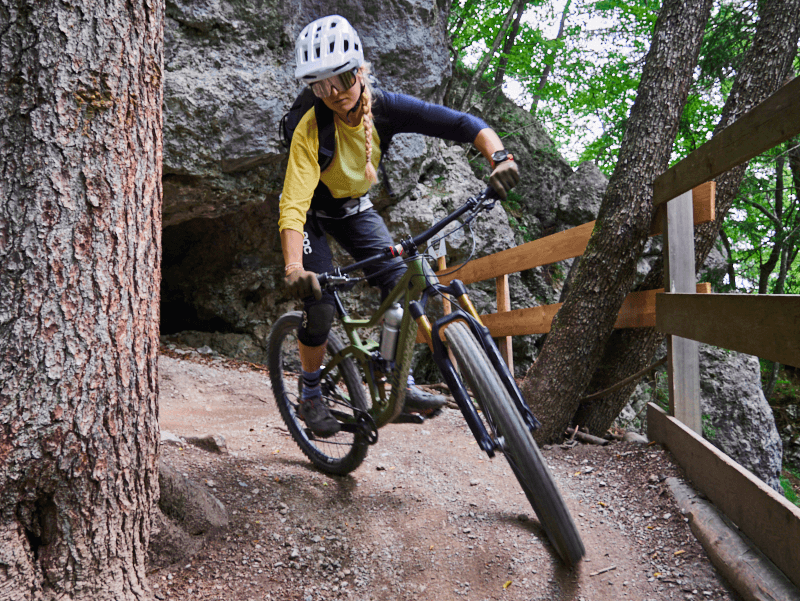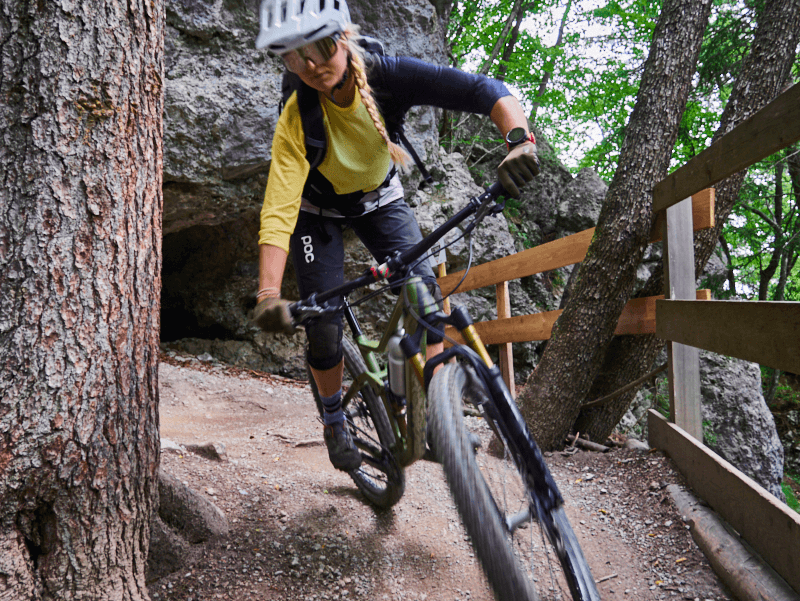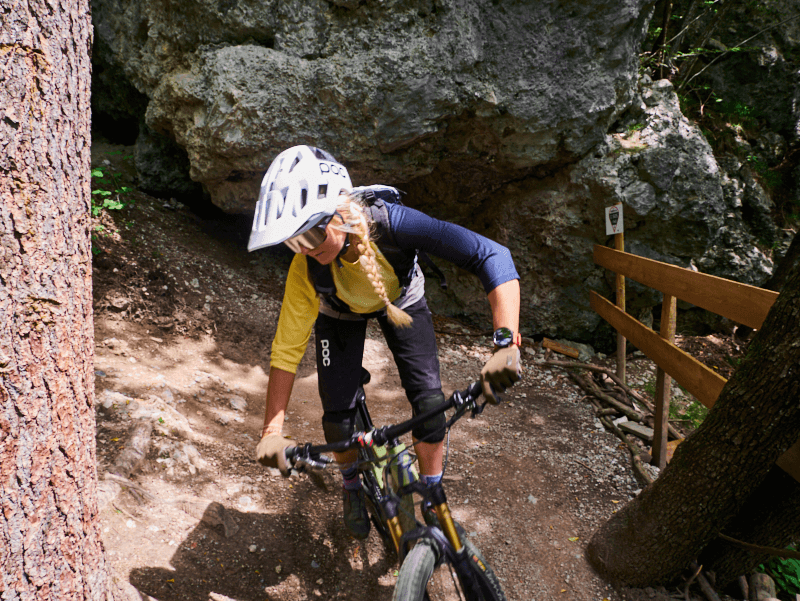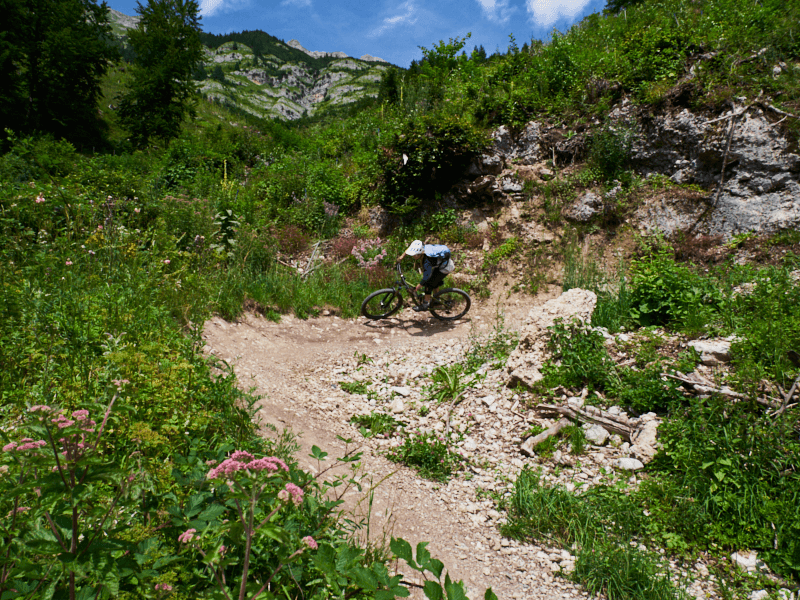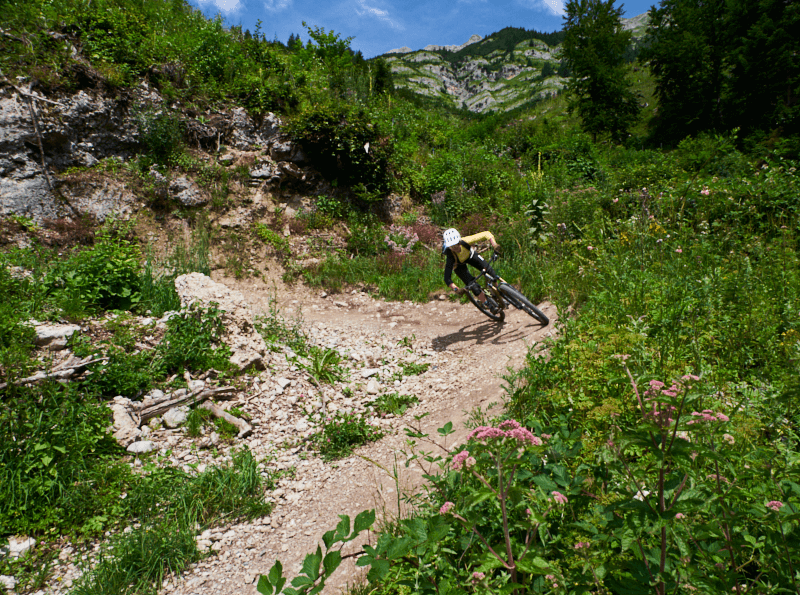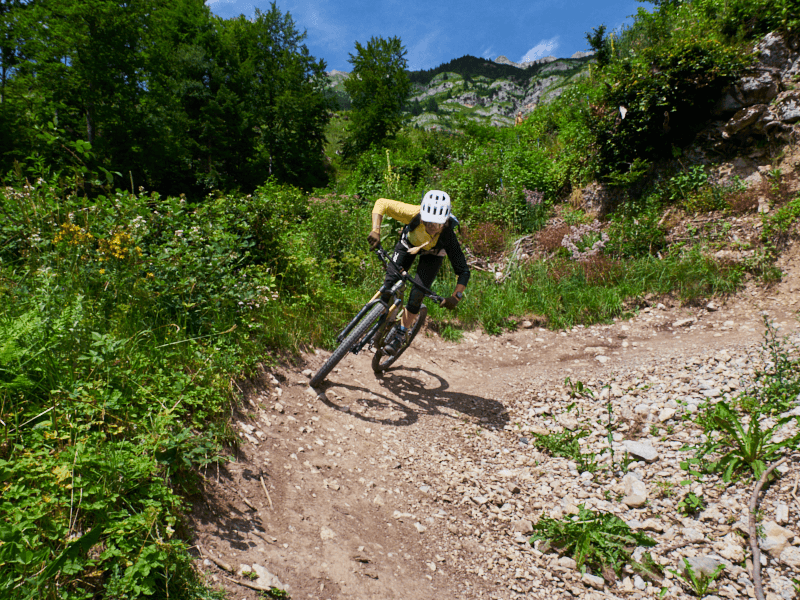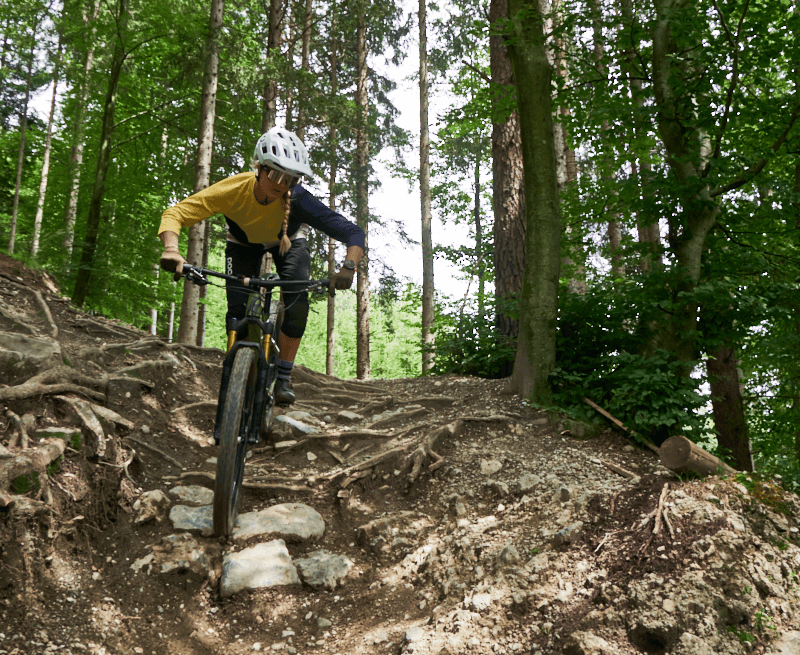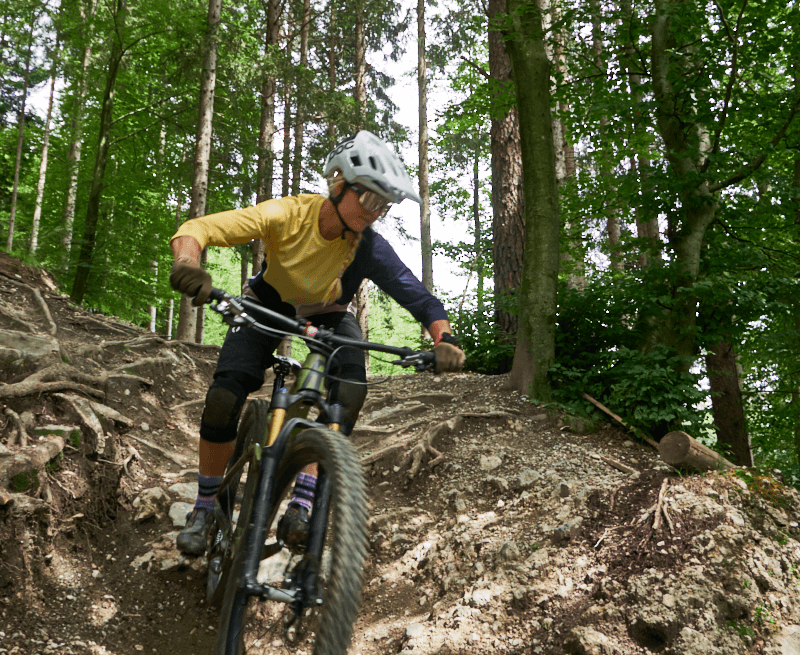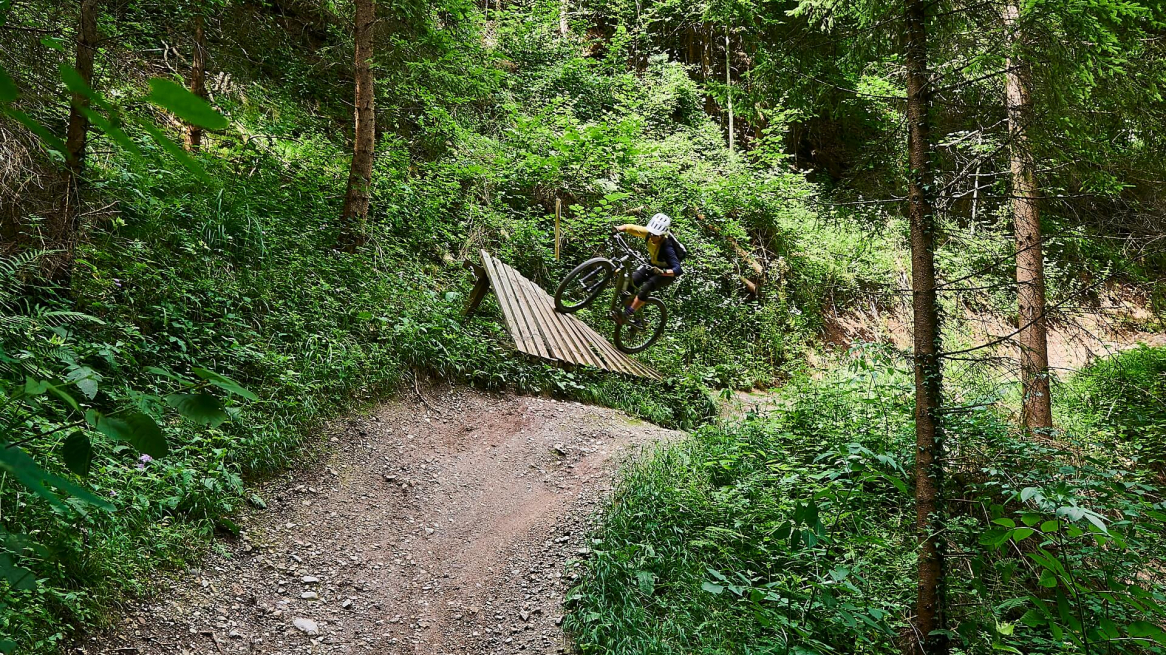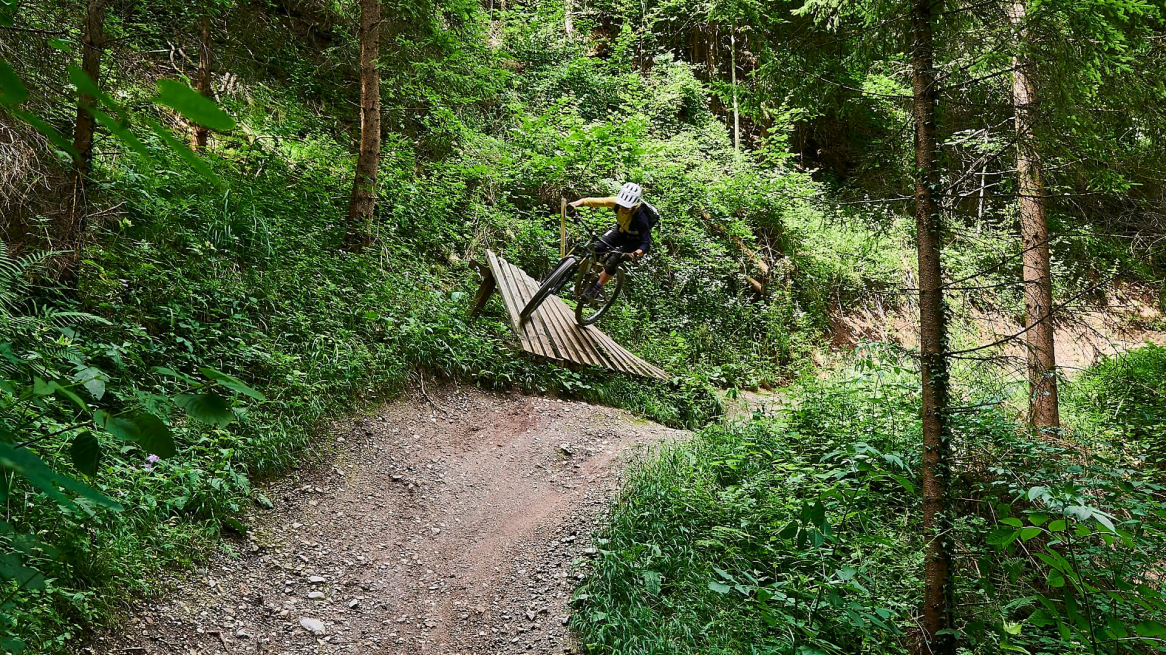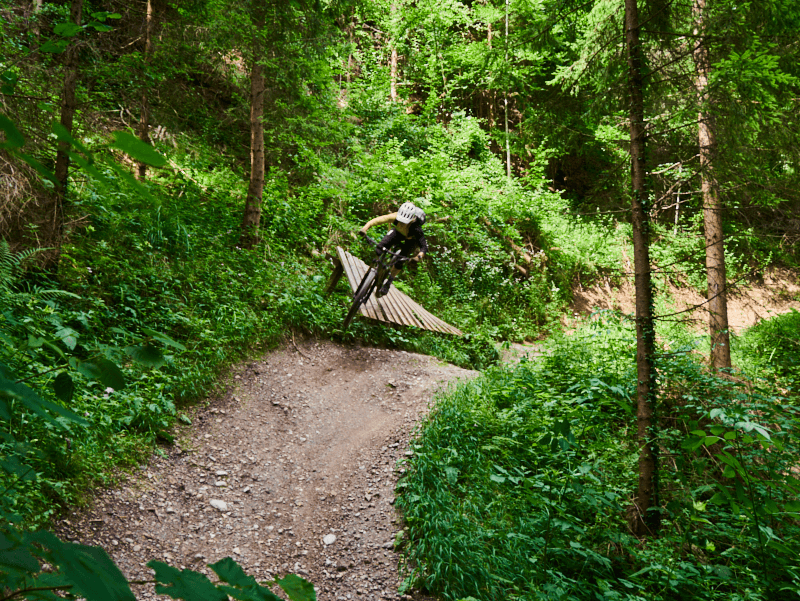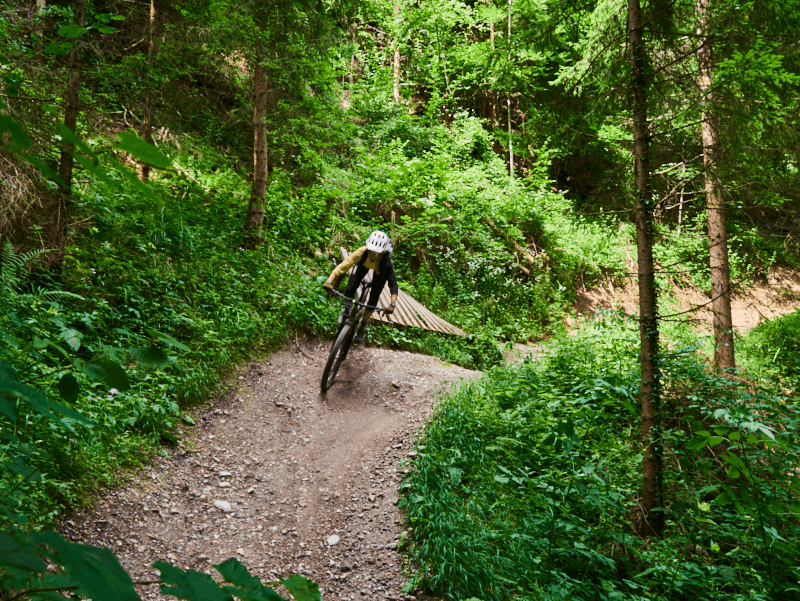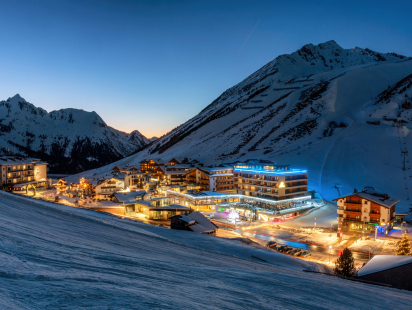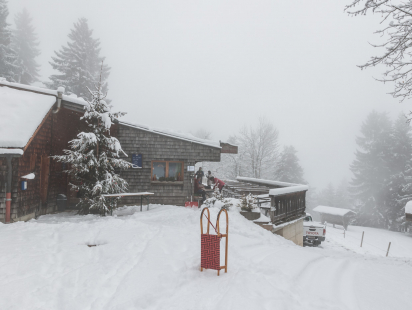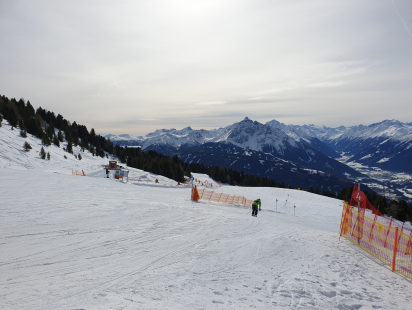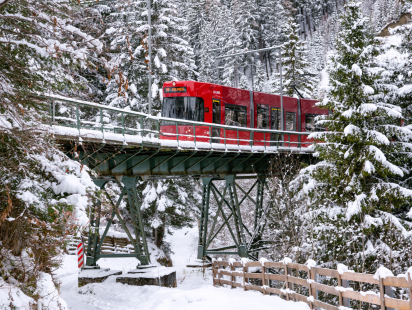If you're addicted to the bike hype in Innsbruck, you can't miss the Arzler Alm Trail (AAT). Varied, flowy and with a few optional features for more advanced bikers: the trail stretches for almost three kilometers along the Nordkette - directly above the city. Here are a few tips for beginners. So that you arrive at the end of the trail safely and with a big grin on your face.
THE BASIS: BASIC POSITION
First Step in the driving technique is a solid 'basic position'. On the one hand, it helps you to achieve a safe riding feeling, stability and balance. On the other hand, it allows flexible movements and active handling of your bike. Thus, it is considered as a riding technique basis and you should always be able to find your way back to the basic position. Nevertheless, the position varies depending on the surface, obstacles and steepness of the trail.
The hands close with the handlebar ends and thus use the entire handlebar width. The index finger is sufficient for braking - the remaining fingers firmly enclose the grips. To be able to use the single-finger brake optimally, your cockpit setting must be perfectly adjusted to you. Your index finger should be able to rest in the outermost recess of the brake lever. Only then will you have enough power and braking feel with just one finger.
The arms are bent and the elbows are facing outwards (a.k.a. the gorilla). This way you can do active arm work, i.e. compensate for steps, obstacles, waves, roots and so on. The bent arms ensure, among other things, that there is enough pressure on the front wheel - which in turn leads to traction to the ground and optimal grip of your tire. If your arms are long and stretched and your front wheel becomes 'light', it can quickly slip away on loose ground. It's also harder to ride around tight corners with your arms outstretched, as you'll lock yourself up and won't be able to initiate small radii.
Center of gravity, knees & pedals
The body's center of gravity should not be too far forward, and especially in steep terrain and during abrupt braking maneuvers, your center of gravity changes backward to compensate for the strong centrifugal forces to the front. As a point of reference you can remember: Your pelvis should always be approximately above the bottom bracket. This means that the steeper the terrain, the further back your center of gravity moves. The upper body lies rather flat over the top tube. To achieve this, you need to bend your pelvis. The steeper the terrain, the lower you can move your upper body towards the handlebars.
The knees are slightly bent and can thus move just as actively depending on the surface conditions. The legs should not be bent too much in the basic position. Otherwise the body's center of gravity will move too far forward.
The pedals are in a horizontal position. Ideally, you load both equally and thus prevent one-sided muscle soreness after long descents.
TURNS TURNS TURNS
On the Arzler Alm Trail you will find many curves. Most of the berms are very flowing and easy to ride. In order to be able to ride smoothly and, above all, quickly in many curves, you still need a few technical basics.
Line: Ideally, you should take the outermost, highest possible line when entering a turn. The centrifugal forces and the shape of the turn will transport you centrally back into the trail when you exit the turn. The prerequisite for this is a medium to high speed. #stayinyourcomfortzone
Handlebar pressure: If you slightly increase the pressure on the inside of your handlebars, your bike will lean in the right direction. Even with little inclination, you can ride a much tighter radius! You can also try this out in the 'dry': Rider stands next to the bike, holds it centrally to the ground - turn the handlebars strongly and see what natural radius the bike drives - on the next lap, the bike has the same handlebar angle but slightly tilted - watch how the radius decreases!
View: Trick 17 when biking. The direction of gaze not only helps you mentally over difficult places, it is also the ideal curve initiator. Try to move your head in the direction of the curve exit as soon as you enter the curve. So your shoulders already rotate in the right direction - at the latest at the apex of the curve, your gaze should be directed a few meters into the continuing trail.
STAGES
At higher levels you clearly notice how important active arm work and bent elbows are. With the foresight you have already scanned the trail and see: There comes a step and immediately after a tighter curve! Then you definitely have to slow down and possibly lower your upper body towards the handlebars. As soon as your front wheel has passed the step, actively push your handlebars down. This gives your tire grip on the ground again as quickly as possible. Your pelvis and center of gravity move backwards to compensate for the temporary steepness. As soon as both wheels are level again, you return to your central starting position. In order to still make the tight turn, your gaze is already directed towards the exit of the turn and the pressure is increased on the inside of the handlebars. #nobodysaiditwaseasy
NORTHSHORE ELEMENT - WALLRIDE
This is probably where your head plays the biggest role. Because the small wallride on the Arzler Alm Trail is actually easy to ride - as long as you have already mastered a solid basic position (and have a little courage and bike experience). The important thing here is to get into an active basic position before the wallride. That means: The pressure on your handlebars is given, your center of gravity is centrally above the bottom bracket. Then you definitely need speed and momentum to be able to take a relatively high line and also to get over the small jump at the end safely. During the jump, your arms become long again for a short time - and then immediately return to the basic bent position. Here again, your gaze helps you - directed to where you want to go!
The bike riding technique is quite extensive. But even small tips and tricks and the right exercises can help you improve your skills. Visit a riding technique course - for example at Flat Sucks!
HERE you can find a description and more information about the Arzler Alm Trail.
Have fun riding!
Rate this article
Show me the location on the map
L - ives life to its limits,
E - xperiences most of her greatest moments on the mountain,
N - ever says no to good coffee and
A - dores her mum's homemade sauerkraut
Similar articles
Who has experienced them, these clear, cold winter nights in the high mountains? Maybe even under a…
The toboggan run from the Rumer Alm is one of my absolute favorite toboggan runs. At just…
When I came to Austria at the age of 16, winter sports were still pretty exotic for…
Snow-covered forests, exercise in the fresh air, enjoying the winter... I am regularly drawn to go outside,…

